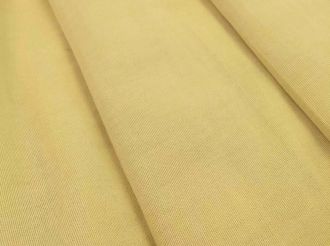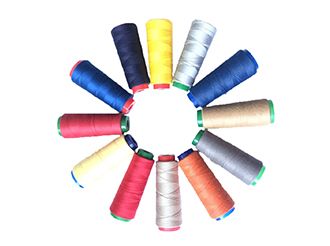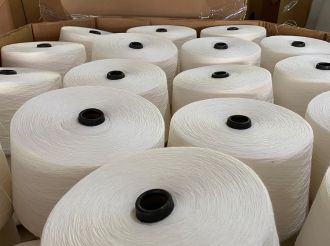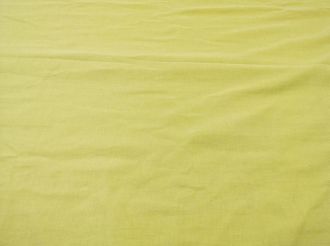Production process of aramid fiber
- 2022-12-28
Synthetic method of para-aramid fiber
The main raw materials of para-aramid are terephthaloyl chloride (TPC) and p-phenylenediamine (PPD). Para-aramid must undergo polycondensation reaction under anhydrous conditions. The preparation methods are:
① Interface polycondensation method:
Dissolve the dicarboxylic acid chloride in an organic solvent immiscible with water, such as benzene, carbon tetrachloride, etc., and then dissolve the diamine in water (add a small amount of Na2CO3 or NaOH to the water to absorb the hydrochloric acid generated by the reaction), Then the above two solutions are mixed, and at the moment of adding, polycondensation reaction occurs on the interface of the two liquids to form a polymer film. Since the reaction is carried out on the interface, it is called interfacial polycondensation.
②Low temperature solution polycondensation method:
It is the most mature method of synthesizing aramid fiber at present. This method is used in the synthesis of industrialized Kevlar and Technoral fibers.
In a glass polymerization reactor equipped with a stainless steel stirrer and passed through dry N2, add an NMP solution containing a certain amount of anhydrous LiCl and pyridine, add powdered p-phenylenediamine at room temperature, and dissolve it in an ice-water bath The solution is lowered to a certain temperature, and then stoichiometric powdered terephthaloyl chloride is added, and the stirring speed is increased at the same time. As the reaction progresses, the viscosity of the solution increases, and the liquid level rises. After a few minutes, rod climbing phenomenon occurs and gel appears. Continue to stir for a few minutes to smash the yellow gel group, and then let the product stand for more than 6h. Add a small amount of water to the obtained polymer, crush and filter, then wash with cold water and hot water several times to remove residual solvent, LiCl, HCl and pyridine, until the washing liquid is neutral, then dry the polymer at 100°C More than 5h, a dry polymer was obtained. Then the polymer is mixed in cold concentrated sulfuric acid, heated to 75°C to become a nematic liquid crystal solution, and then spun.
Synthetic method of meta-aramid fiber
Meta-aramid is formed by polycondensation of IPC and MPD, and there are low-temperature polymerization, interfacial polycondensation, emulsion polymerization, and gas phase polymerization.
Among them, the low-temperature polymerization method and the interfacial polycondensation method are more common.
DuPont of the United States uses low-temperature polymerization for polycondensation, and adopts dry spinning process; Japan's Teijin uses interfacial polymerization for polycondensation, and adopts wet spinning process; Shandong Yantai Taihe New Materials and Guangdong Caiyan both use low-temperature Polycondensation by solution polymerization method, using wet spinning process to produce meta-aramid fiber.
①Low temperature polymerization method:
Dissolve MPD in N,N-dimethylacetamide (DMAc) solvent under stirring, cool to about 0°C, then add IPC under stirring, and heat up to 50~70°C for reaction, during the reaction process will generate HCl, Ca(OH)2 should be added to neutralize it during the reaction, so that the solution becomes a DMAc-CaCl2 solution system, and its concentration can be adjusted for wet spinning. This method consumes less solvent, the operation steps are simple, and the production efficiency is high, so the low-temperature polycondensation method is widely used.
② Interface polymerization method:
Dissolve IPC in a tetrahydrofuran (THF) solvent to form an organic phase; dissolve MPD in an aqueous solution of sodium carbonate to form a water phase, and then add the organic phase to the water phase under vigorous stirring, so that the organic phase and the water phase are in two phases. The polycondensation reaction occurs rapidly at the phase interface. The resulting polymer precipitated out and was filtered, washed and dried to give a solid product.
The reaction speed of the interfacial polymerization method is fast, the relative molecular weight of the generated polymer is high, and high-quality spinning dope can be prepared, but due to the complex process and high equipment requirements of this method, it leads to high investment.
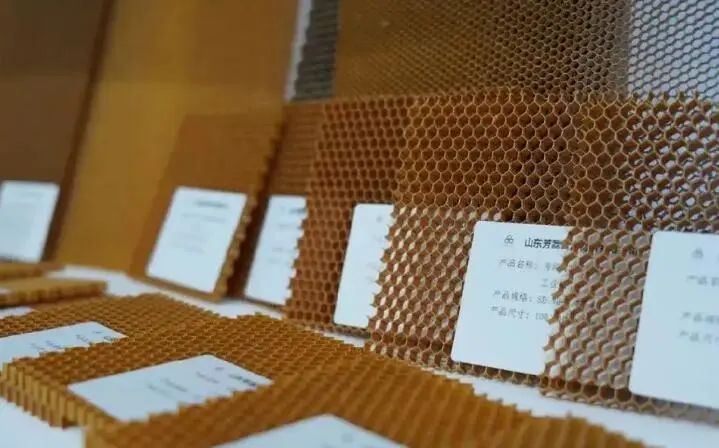
Application Fields of Aramid Fiber
Aramid fibers are widely used in my country's aerospace, automobile, electromechanical, construction, sports and many other fields, and are one of the indispensable materials in future life.
Aviation sector
Aramid fiber has low density, high strength, and good corrosion resistance. It can be used to manufacture rocket engine casings for missiles, broadband wave-transmitting materials for fuselages, main wings, and empennages of aircraft and spacecraft, and structural components that can withstand impact forces. The multi-layer honeycomb structure board prepared by impregnating aramid cloth with epoxy resin to form aramid prepreg and directly bonding with honeycomb or foam structure has outstanding impact resistance and electromagnetic wave permeability. The super-hybrid composite laminate formed by overlapping and hot-pressing aramid fiber, thin aluminum plate, and epoxy non-woven fabric has extremely high specific modulus and specific strength, and its anti-fatigue life is 100 to 1000 times that of aluminum alloy plate. It can be used in aircraft fuselage and other parts. The resin-based reinforced composite material prepared by aramid fiber is applied to the aircraft passenger body, which can greatly reduce the total weight of the aircraft.
Construction sector
The ductility of aramid fiber fabric is better than that of carbon fiber. The material itself is light in weight and flexible in freedom. It is an ideal reinforcement material for construction projects, especially when reinforcing irregularly shaped components. It is not necessary to chamfer. Weaving aramid fibers into steel bars can be used as a cement-reinforced skeleton for large buildings. In addition to the advantages of high strength and light weight, it is also corrosion-resistant and has good shear resistance.
Transportation
Due to the low density of aramid fibers, it can withstand high and low temperatures, and has good adhesion to rubber, so it can be used as tire cords for automobiles or aircraft. The tire made of aramid fiber has light weight, thin tire, low rolling resistance, high tire bearing capacity, and good wear resistance, cut resistance and puncture resistance, and the ground pressure center of gravity of the tire during use The movement is small, the steering performance is good, the heat is easy to radiate, and it is not easy to deform, which improves the ride comfort of the car, prolongs the service life of the tire, and can meet the requirements of modern supersonic aircraft for the use of tires.
Electronic and electrical field
Aramid fibers have higher strength and modulus and lower dielectric coefficient, and good electromagnetic wave transmittance. Under the same rigidity conditions, the thickness of the radar antenna shield made of aramid composite materials can be reduced by 30% compared with glass fiber composite materials. %, the electromagnetic wave transmittance increased by 10%; the laminated substrate made of aramid fiber and epoxy, phenolic, polyimide and other resins has a high matching degree of linear expansion coefficient with ceramics, and it does not suffer from thermal expansion and contraction. It can cause cracking and can be used to make special printed circuit boards in surface mount technology, which is conducive to the miniaturization and light weight of electronic equipment.
Utilizing the characteristics of high strength and high temperature resistance of aramid fiber, it is used as a "tension member" in the optical fiber, which can protect the small and fragile optical fiber from elongation and deformation when it is subjected to tension, and will not affect the transmission of light. The composite product of aramid fiber and carbon fiber has good processability and semiconductor properties, and can withstand high temperature. It is mostly used to make materials for reducing electric fields in high-voltage devices. After being impregnated with insulating varnish, aramid paper has good insulation properties, and combined with natural mica sheet, it is used as insulation material for heat-resistant motors.
Other areas
Aramid fibers contain a large number of benzene rings in their molecules, which have good chemical stability, corrosion resistance, high specific strength, light and strong, and can be used to manufacture cables for seagoing vessels and deep oil wells. Utilize the high temperature resistance and fatigue resistance of aramid fiber to make high-grade rackets, fishing rods, sleds, skis, ski poles, bows and arrows, rowing boats, golf clubs, etc., and can also be used to make mountaineering shoes with harsh sports conditions Boots, boxing gloves, racing helmets, racing car bodies, etc. Since asbestos is a serious hazard to the human respiratory tract, aramid fibers can be used instead of asbestos to make reinforced rubber sealing plates and other seals, which are used for the liners and rings of automobile brakes.
Aramid unidirectional fabric provides a better solution for building reinforcement
Aramid fiber can not only build roads, but also strengthen houses, and has a very broad prospect in the field of construction.
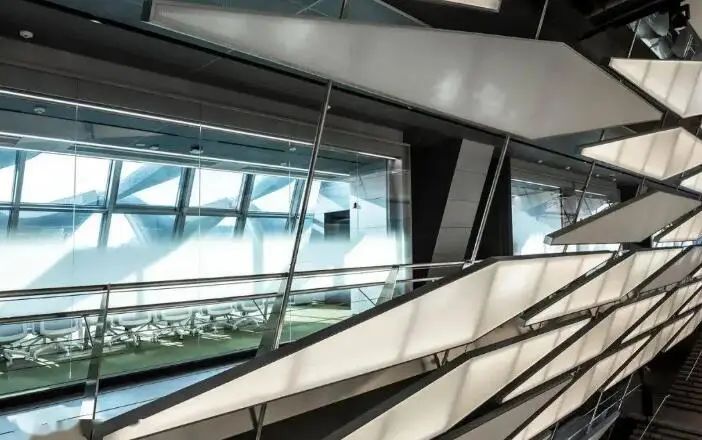
Para-aramid fiber is a new type of high-tech synthetic fiber, which has excellent properties such as ultra-high strength, high modulus, high temperature resistance, acid and alkali resistance, and light weight. Or 2 to 3 times that of glass fiber, the toughness is twice that of steel wire, and the weight is only about 1/5 of steel wire. At a temperature of 560 ° C, it will not decompose or melt. Aramid fiber cloth composite material has high tensile strength, small specific gravity, good corrosion resistance, good elongation, good insulation performance, strong toughness, high shear strength and extrusion strength, strong shock resistance, and excellent intrinsic flame retardancy. Performance, can be used to repair and reinforce bridges, columns, subways, chimneys, water towers, tunnels, electrified railways, seaports and wharves, especially suitable for reinforcement and repair of concrete structures.
For example, it is applied to beams, mainly bridges and civil buildings or industrial plants. The reinforcement methods include bending resistance and shear resistance. When performing bending resistance, the fiber direction of the aramid cloth is consistent with the axial direction of the beam. The tension side to increase the load-carrying capacity of the beam. According to relevant tests, as long as the beam is not a super-reinforced beam, a layer of 280 grams of aramid cloth can increase the bearing capacity by about 30%, and two layers can increase the bearing capacity by about 40%. The direction is perpendicular to the axis of the beam.
Aramid cloth is also ideal for reinforcing posts. First of all, because the elastic modulus of aramid fiber is 118Gpa, compared with the elastic modulus of carbon fiber 230Gpa, aramid fiber has better ductility; secondly, only about 10mm is needed for edge grinding, and generally no grinding is required, while carbon fiber needs about 30mm. In contrast, using aramid cloth can save a lot of man-hours. Finally, since aramid cloth is a kind of soft cloth, it has better followability, especially for caps with irregular shapes, it is more suitable to use aramid cloth for reinforcement.
In terms of reinforcement applications of masonry and panels, the requirements for the reinforcement headroom of the panels are generally relatively high, and the appearance will not be affected after reinforcement, so it is more convenient to use thin and soft aramid composite materials for reinforcement. In the reinforcement of chimneys and water towers, due to the high-altitude development of structures such as chimneys and water towers, it is difficult to reinforce and maintain them. Traditional methods are basically difficult to solve such problems, and aramid fibers are light, high-strength, corrosion-resistant and durable. Good, it will be a better choice for strengthening chimneys and water towers.
In the reinforcement of subway tunnels, aramid fabrics also have certain advantages. Since subways and tunnels are structures that work underground, their force is different from that of the ground structure, and there are earth pressures on the roof and sides of the cave. It also has the requirement of headroom, so when repairing cracks, the possibility of using traditional reinforcement methods is very small. Reinforcement and maintenance with aramid cloth can meet its various requirements. The cracks in the vault or side wall of the subway or tunnel are generally multi-directional and irregular, which requires its repair materials to have good shear resistance, and aramid is also a non-conductive FRP material. Therefore, The advantages of aramid cloth in the reinforcement application of tunnel subway engineering are quite prominent.
